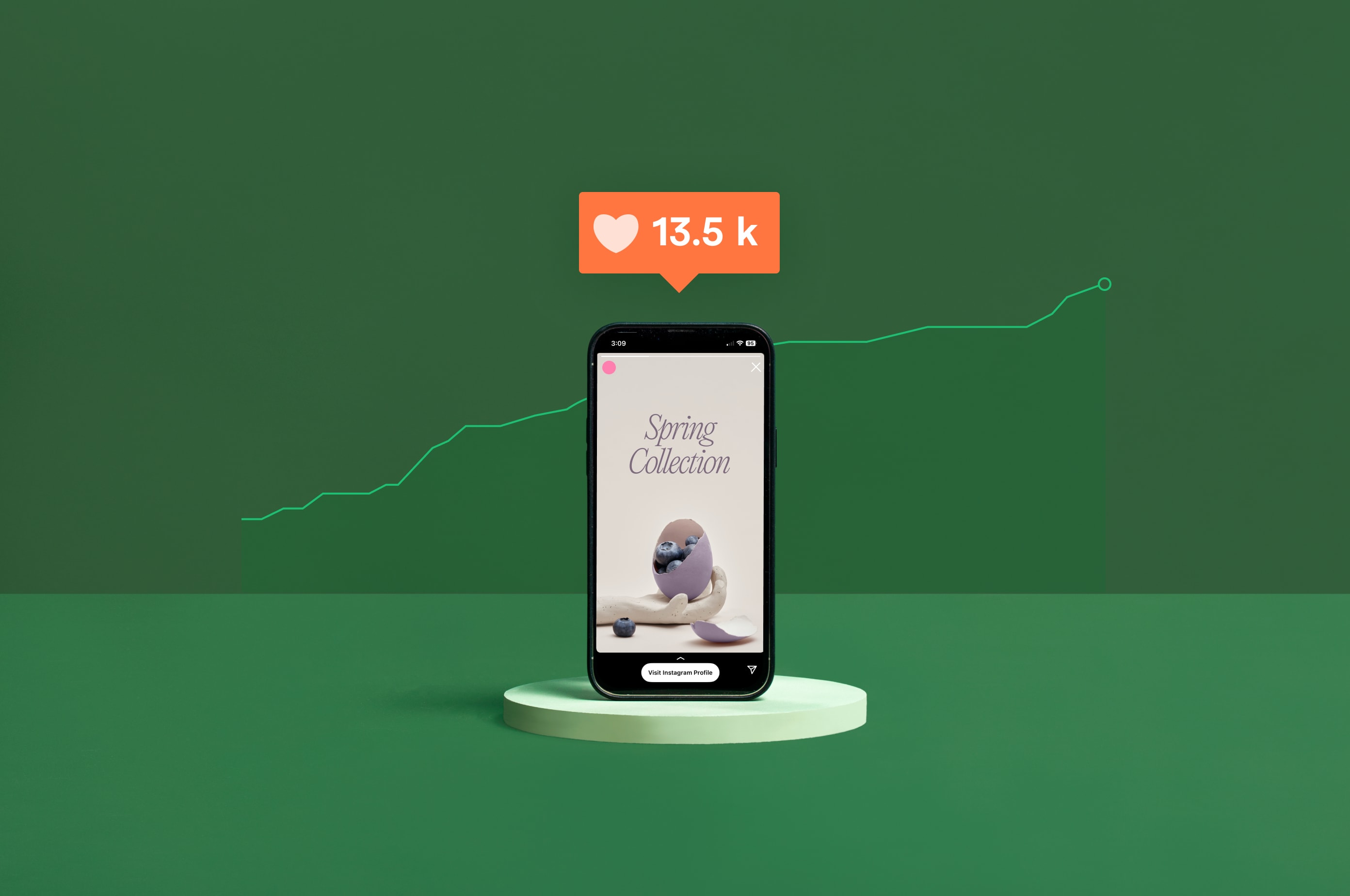7 Social Media Advertising Examples that Turned Clicks into Cash in 2024
Discover the power of social media advertising with these seven real-life examples of campaigns that turned clicks into cash.
 July 31, 2023
July 31, 2023 15 minute reading
15 minute reading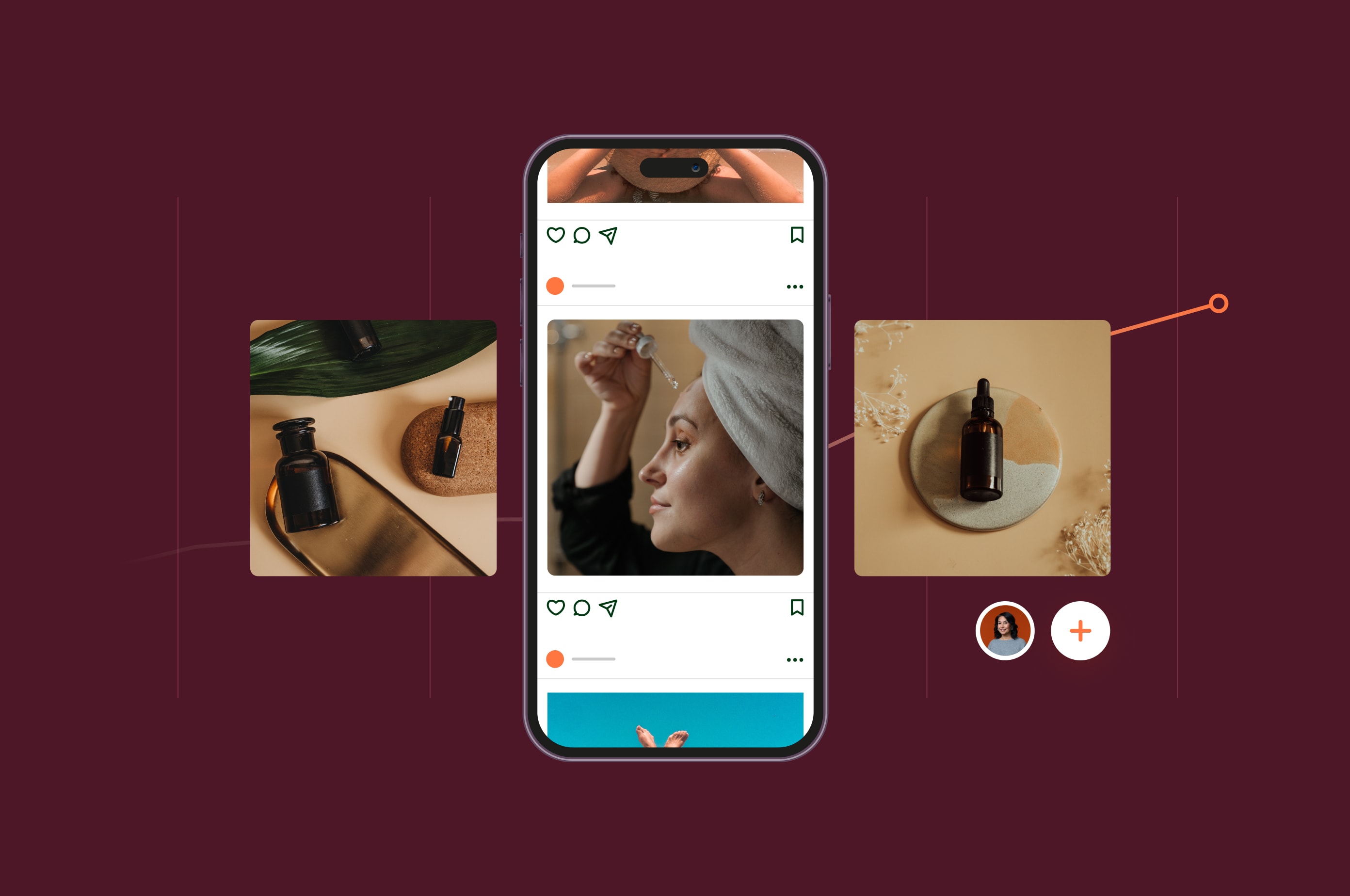
In 2020, businesses spent $28.30 on social media ads per user. By 2025, that number is expected to rise to approximately $40.
Unsurprisingly, social media has become an integral part of brands’ digital marketing strategies. These platforms offer a subtle yet effective way to create brand awareness and bring in customers through hyper-targeted social campaigns. It’s one of the reasons why 45% of marketers plan on spending more money on social ads—more than what they did in 2022.
But which social media ads were worth the investment for small businesses?
Let’s explore seven social media advertising examples that hit the mark, and tips to inspire your next campaign.
Hire a paid social media pro to boost sales
7 best social media advertising examples that grew small businesses
Here are seven small businesses that were able to increase their returns on ad spend (ROAS) while generating significant results for their bottom line:
1. Underoutfit
Underoutfit, an apparel brand, wanted to try more engaging ad formats, like user-generated content (UGC), to see if it brought better results.
Since the team was already running ads, they ran a split test with branded influencer content and video ads versus standalone video ads to determine what worked best for them. Within two weeks, they realized the power of influencer marketing, as this strategy brought them better results, surpassing their product-only ads.
Results:
Generated 38% higher ROAS
Generated 47% higher click-through rates (CTR)
Achieved 31% lower cost per purchase
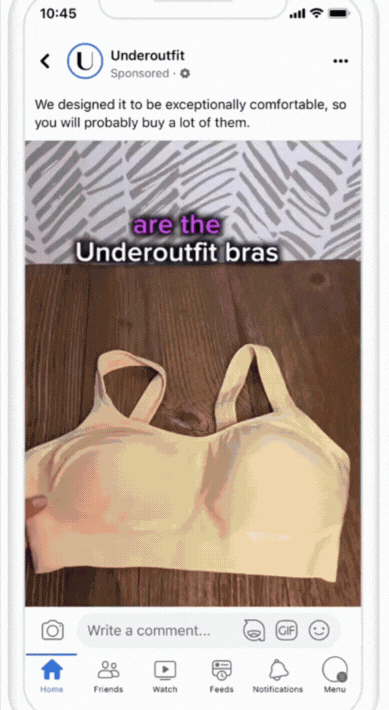
Underoutfit’s 15-second branded content video showing an influencer unboxing their products.
Why it worked:
While product ads are effective, nothing beats the power of having another human being not only recommending a product, but also showing how it works. That’'s precisely why Underoutfit’s branded content strategy was successful.
Customers could see exactly how a product is delivered and how it looks on an actual human being before purchasing it. It increased their confidence in the product—encouraging them to click Buy.
2. Kiehl’s
Kiehl’s, a personal care brand from Malaysia, wanted to capitalize on an upcoming Ramadan festival to increase its sales. To do this, it ran a seven-week campaign involving carousel ads that sent visitors to either its website, Instagram Shop, or Instagram Direct.
The Kiehl’s team used a full-funnel campaign that combined ads with live events—branded as a virtual open house during the pandemic. They also created a gamified experience on the ads and website so visitors could play these games and win products.
Results:
50% new customers in the first half of 2021
8x return on ad spend on Facebook products
29% conversion rate for qualified leads (via Instagram Direct)
59% of sales came from Facebook products
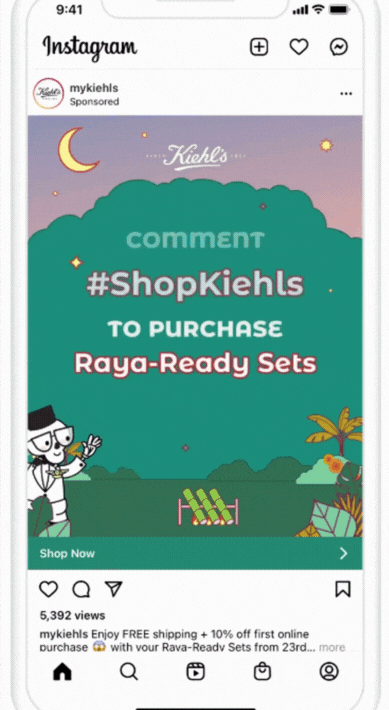
An example of Kiehl’s carousel ads on Instagram.
Why it worked:
Kiehl’s wanted to give customers an exciting experience during the pandemic, especially during the festival season, considering everyone was on lockdown at home.
Customers got a complete picture of their offerings through their live events, free samples, and product showcase. Plus, providing on-demand 1:1 support through direct messages showed customers that the brand cared about their concerns and queries, removing friction from the buying process.
3. Valyōu Furniture
Valyōu Furniture, a furniture business focused on a millennial audience, wanted to reach tech-savvy customers, making Snapchat the ideal platform, due to its ad formats, including augmented reality (AR) filters. It used video ads, collection ads, and dynamic product ad formats to showcase its unique furniture collection.
The company also invested in immersive experiences like AR filters to give its audience a different type of shopping encounter. Users could try out the furniture virtually to see how it looked in their home—increasing their confidence in the product.

Valyou’s AR filters. | Source
Results:
The brand generated massive awareness, a low cost-per-click (CPC), and an 80 times return on ad spend (ROAS).
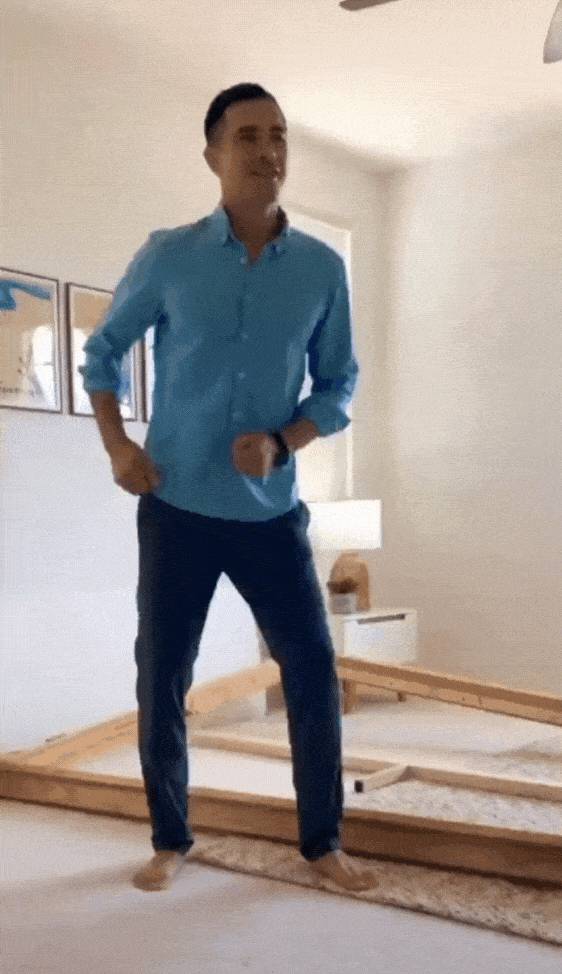
An example of UGC content published by Valyou. | Source
Why it worked:
Valyōu knew who it was targeting and where its audience typically hung out. By taking advantage of this data, it created user-generated content (UGC) to push visitors into the consideration stage where they got a good look at the ease of setup, which can be challenging for most furniture companies to show.
Additionally, the use of AR gave a premium yet affordable feel to the products and decreased customers’ likelihood of making a bad purchase—resulting in better customer satisfaction.
4. Coin Zoom (formerly Seed Equity)
Seed Equity, now known as Coin Zoom, is an equity crowdfunding platform looking to increase brand awareness and signups. As a new player in a competitive space, that was a difficult task, especially considering the challenge of finding the right people interested in investing.
Coin Zoom leveraged LinkedIn Ads to get the word out and encourage people with similar interests to sign up. Using dynamic ads and sponsored content formats, it raised awareness by targeting individuals who indicated an interest in investment.
As the ads appeared in LinkedIn feeds and within investment-specific groups, they were right where their target audience was—driving awareness and signups to the platform.
Results:
1,205% increase in website signups
43% increase in LinkedIn company page followers
Member base expansion to 33 countries
Dynamic ads CTR was five times the average benchmark
Sponsored ads CTR was 3.4 times the average benchmark

Paid ads that Seed Equity published on LinkedIn. | Source
Why it worked:
People who want to invest in companies are not limited in terms of job titles. A CEO or an entrepreneur might be interested. This made targeting a massive issue for Coin Zoom, as it had to look for other ways to reach its audience.
Since it knew the places where its audience hung out and had previously indicated an interest in this topic, it could target them more effectively. By honing the right platform—LinkedIn in this case, and creating simple targeted messaging, they could achieve the desired results.
5. The Woobles
The Woobles is a crotchet kit for beginners of all ages. While the product seems like it’'s for kids, many of its sales come from adults who want to learn a new skill. To get ahead of the 2022 holiday season, the company leveraged TikTok ads to increase its brand awareness and sales.
As a relatively new brand, the founders spoke about their journey as an Asian American and Pacific Islander (AAPI) duo. They used Spark Ads, which allows you to promote organic feed content as ads within the platform—saving them resources that usually would be spent on creating new ads.
Results:
Targeted individuals with a higher value per purchase
Lowered cost per mille (CPM) by 25%
Lowered cost per action (CPA) by 18%

UGC content that The Woobles published on TikTok.
Why it worked:
This strategy is an excellent example of leaning into your unique story and delivering an authentic experience to your customers. The brand communicated why its crochet kits were superior to alternatives in the market. Plus, the founders spoke about their origin story—creating a relatable experience for potential customers.
It was a great combination of storytelling, organic content (promoted as ads), and an interesting product. The Woobles was able to attract more brand awareness and more customers—evident from the fact that its audience demanded similar content, even after the holiday season.
6. Wildfish Cannery
Wildfish Cannery, a seafood retailer, wanted to take advantage of digital advertising tools to increase its business. Being located in a remote Alaskan town, high foot traffic within its stores was not a possibility. It wanted to expand its business of selling premium yet affordable canned goods beyond one part of the country.
This is why the team decided to run Pinterest ads to reach a broader audience interested in their products. They uploaded their entire catalog to show the variety of available products, coupled with content on making delicious recipes using them.
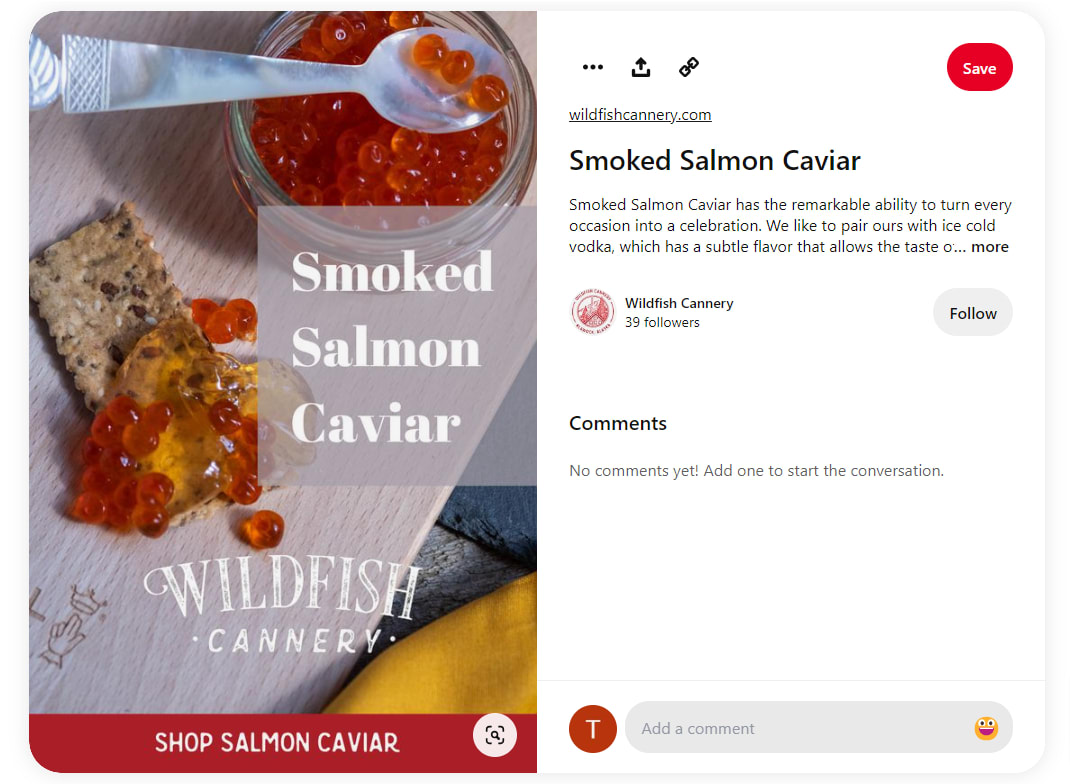
Wildfish Cannery’s product pin catalog.
Results:
The brand achieved five times return on their ad spend through shopping and collection ads.
Why it worked:
Wildfish Cannery’'s team knew that individuals use Pinterest to find recipe pins—especially for easy-to-use items like canned foods. They used that data to create content that did just that while showcasing the quality and unique proposition (the Alaskan feel) of their product. This enticed customers to click these ads and shop directly from Wildfish Cannery’'s website.
7. Cider
Cider, a social-first fashion apparel brand, wanted to grow its revenue and customer base while maintaining costs at a sustainable level. To achieve this, it leaned in on Google Ads—specifically YouTube Ads.
As YouTube Shorts were being pushed on the platform, it marked the perfect opportunity to create short-form videos advertising Cider’s limited-time offers.
For instance, it created Shorts for an offer that allowed customers to shop any piece of clothing for only $12. And if it was the customer’s first time shopping from Cider, they got an additional 15% off. Using this strategy, Cider could increase its remarketing list and expand its customer base in a short period.
Results:
Achieved a 33% lower CPA
Experienced a 46% increase in conversion rate
Acquired 40% more new customers
Why it worked:
Cider's team knew that to grow their customer base quickly, they had to invest in a relatively quick win, i.e., ads. As they already had a subscriber base on YouTube and knew their target audience (teenagers and young women) was present on the platform, it boded well for them.
By implementing an urgency tactic in the copy, they could expand the customer base, targeting especially those who like staying on trend and are likely to make impulse purchases.
Hire paid social ad experts and campaign managers to promote your business
5 tips for creating social media ads that bring in revenue
Now that you know how effective social media ads are, let’s look at tips to help you achieve similar results.
1. Mine customer insights from the right channels
You need to know who you're catering to create effective and high returns ads. You need to know where your customers are and what they need. This is why the voice of customer research is crucial, as it guides the entire production process. It also helps you promote your business in local regions when you know the preferences of the audience in that region.
Identify the social media platforms they visit often, and conduct thorough research to understand:
Demographics
Target regions
Interests
Behaviors
Purchasing habits
Phrasing
For instance, LinkedIn won’t be the right platform if you're targeting men between the ages of 15 and 45 for your newly launched gym. A consumer channel like Instagram or TikTok would work best.
So understand your ideal customer and then launch your ads. It’'s also recommended to lean into your organic social analytics to see what content resonates the most.
2. Advertise on channels that are known to provide positive ROI
Not all social media platforms are created equal in driving revenue. Identify the channels with the most active users and research their success stories.
Do they highlight businesses like yours? If they do, what are the returns like? These are the kinds of questions you need to ask before investing randomly. Consider user demographics, engagement rates, ad formats, and targeting capabilities. As advertising costs increase with time, you need to justify the investment.
According to recent reports, Facebook, Instagram, and LinkedIn are still popular platforms for marketers and advertisers. These are safe bets for your strategy.
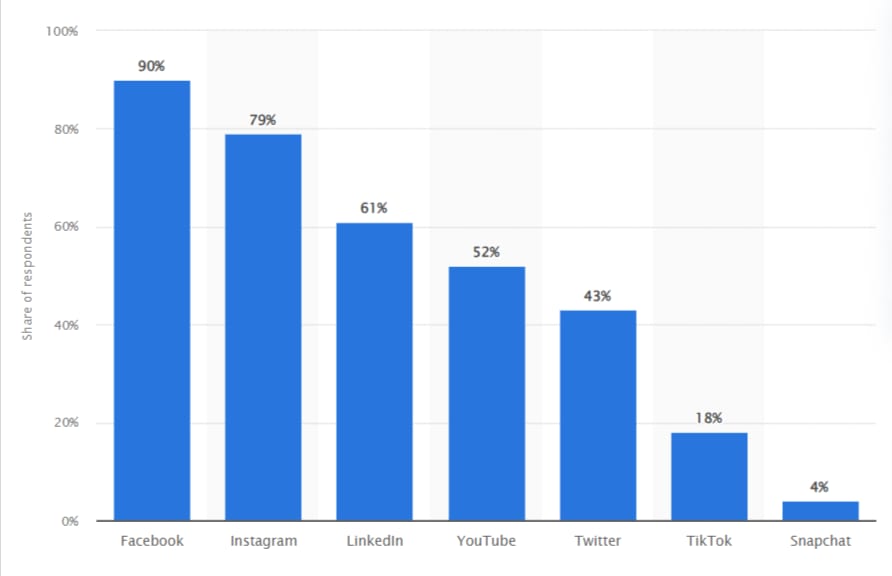
Source: Statista
3. Optimize your social ads for a good mobile experience
Sixty-four percent of digital ad spend is contributed to mobile experiences. Mobile devices have become the primary way of accessing social media platforms, so you should be prepared for this. Offering a seamless mobile experience is a must-have—not a nice-to-have.
Here are a few pointers to create a mobile-friendly experience:
Make sure your ads are visually compelling and easy to read.
Use high-quality images and videos.
Design ad layouts based on the platform’s specifications and terms of use.
Use simple and creative calls to action (CTA), so users know what to do.
Test the creatives and copy before making them live.
“The best way to optimize your social media advertising budget for ROI is to be strategic,” says James Smith, founder of Travel Lingual. “I allocate more funding to those campaigns that produce the best results. I test different ad formats, creatives, and targeting options to see which ones work best for me.”
4. Deliver a “sound-off” experience for diverse audiences
Many social media users scroll through their feeds on mute, even if they're not in a public or quiet environment. If your videos offer a sound-only experience, you could lose out on potential customers because you didn’t provide an accessible experience.
Incorporate visually captivating imagery, bold captions, and clear visual storytelling in your video ads. Use text overlays, subtitles, or closed captions to convey your message effectively, even when the sound is muted. All of this can help you increase your ROAS.
5. Hire social media advertising experts to execute your ads
While it’s possible to create social media ads in-house, the effort required to strategize, create ads, and monitor results is far too much.
“If you want your social media to boom, you can’t expect to spend a quick 30 minutes per day on it. It’s very important to have someone dedicated to focusing all their time and efforts on your social media advertising and growth,” says Crystal Uys, social media manager at Pet Keen.
“It allows you to focus your efforts in other places within your business, while someone with expertise handles the rest. This includes lots of hours of research, creating original content for your brand, running campaigns, and connecting with your social media audience. All of these things take up a lot of time, and for a business without a freelance social media manager, it can quickly become a daunting task.”
So work with social media ad experts with deep expertise in your preferred channel. They'll be able to design a high-converting strategy that drives results faster—which is the goal.
And if you don’t know where to start, we've got you. At Fiverr, we have a massive marketplace of freelance creatives who can do everything from strategy to design to monitoring to get you the results your business needs.
Create your next social media ad campaign with Fiverr
Social media advertising is an excellent way to launch your brand and acquire users quickly. It also works when you need to run limited-time, festive, or awareness campaigns to expand your customer base.
As these platforms already have an existing user base and advertising tools to fine-tune the targeting experience, investing in a validated high ROI strategy instead of relying on only organic content makes sense.
Hire freelance talent who are tapped into current social media trends and aren’t afraid to take a measured and tailored approach to generate returns for your business. This also lowers the pressure on you as a business owner and on your team.
Sign up for Fiverr and find your next social media advertising partner today.
